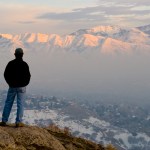This is the Lion Man. It is the oldest carved figurine in the history of the world, approximately 35,000 years old. Unless you don’t accept carbon dating. Then your guess is as good as mine. In general, scholars can’t determine if the figurine is a male or a female. Still, they call it Lion “Man” and not Lion Figurine. Or Lion Statue. The scholars also believe that the statue is likely a representation of a god or goddess.

Now, there may actually be older figurines, but either they didn’t survive or they haven’t been found yet. So they don’t count right now. As for the Lion Man, I think he has a special significance for people.
I believe he illustrates that the human obsession with idols goes back as far as the existence of modern humans. The urge to make images of our gods is deeply ingrained within us and helps us understand why God addressed this problem in the 2nd Commandment. “Thou shalt not make unto thee any graven image.” That’s not something we think about in this modern era. However, most pastors would quickly point out that modern humans have their own kinds of idols. We don’t carve them anymore. But we print them on special paper that can’t be counterfeited. We idolize singers, actors, and athletes. We become addicted to them. The list goes on. God tells us not to make graven images. He means more than carving little figurines.










